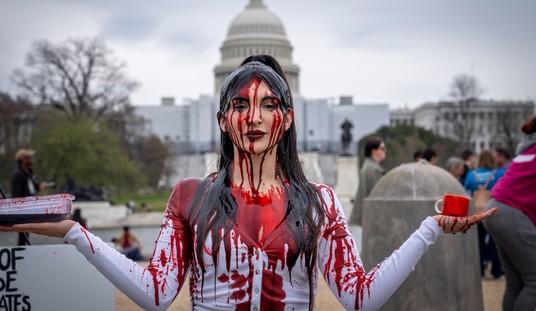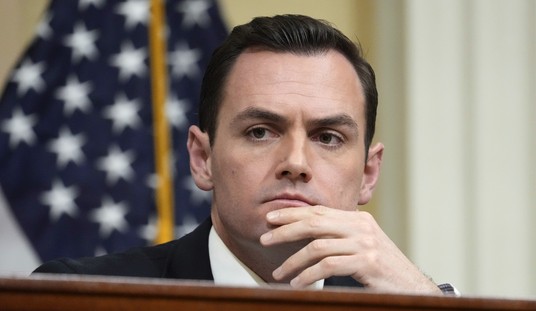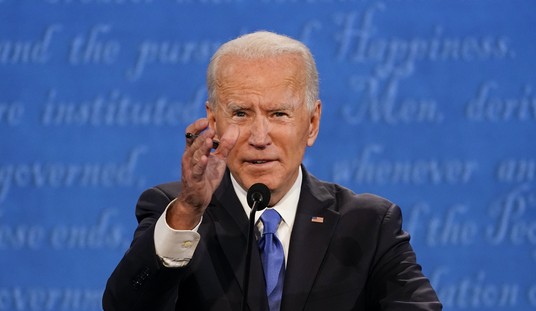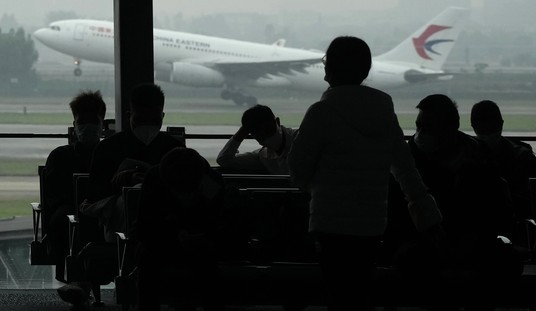This just in from points across the sea. Predator drones struck again, this time in South Waziristan, and served a rather abrupt pink slip to the terrorism career of Ilyas Kashmiri, according to a report from The Long War Journal. The rapidly cooling subject is described as, “one of al Qaeda’s most dangerous military commanders and strategists, the leader of the Harkat-ul Jihad Islami and al Qaeda’s Brigade 313.”
Kashmiri is said to be one of nine member of the al Qaeda-linked Harkat-ul Jihad Islami, or HUJI, who was killed in yesterday’s Predator airstrike that leveled a compound in the Wana area of South Waziristan. A Harkat-ul Jihad Islami spokesman told Dawn that Kashmiri was killed in the attack.
US intelligence officials contacted by The Long War Journal said that Kashmiri was indeed a target of the attack, however they could not confirm he was killed.
“HUJI’s statement is a sure sign we got him, we are pretty confident he is dead but we cannot confirm 100 percent,” one official told The Long War Journal.
Huge is the only word to describe it. Our military has been on a roll lately, no doubt. No confirmation yet if this came as a result of intelligence gleaned from the bin Laden compound, but we really don’t need to know that anyway.
A few items from Mr. Kashmiri’s online dating profile. (Sorry, ladies, but I’m afraid this one may be off the market.)
NBC News reported that United States officials had mentioned him as a possible successor to Osama Bin Laden as head of al-Qaeda.
Kashmiri hailed from the Kotli District[6] or Mirpur District[3] of Pakistan-administered Kashmir. According to several sources, he became a member of the elite Pakistani Special Service Group,[6][10][11] although in an interview he denied this.[3] Kashmiri is also reported to have spent a year studying communications at the Allama Iqbal Open University.[3]
He was an active participant in the 1980s Soviet-Afghan War, training the Afghan mujahideen in mine warfare in Miranshah on behalf of Pakistan.[6] During the fighting he lost an eye and an index finger.[6][12] He continued his official militant work in Kashmir after the war as a member of Harkat-ul-Jihad-al-Islami (HuJI), though disagreements with leader Qari Saifullah Akhtar several years after initially joining in 1991 led Kashmiri to establish his own new unit within HuJI known as the 313 Brigade.[6][13]
During the mid-1990s Kashmiri and Nasrullah Mansoor Langrial were near Poonch when they were seized by the Indian Army and sent to prison, where he would spend the next two years before escaping and returning to Pakistan.[6] Upon his return Kashmiri continued to conduct operations against India, once reportedly being rewarded personally with cash by then Army Chief General Pervez Musharraf for presenting the head of an Indian army sepoy to him.
Well done, team U.S.A. One less fish left in the pool.
Update (AP): I’m not ashamed to admit (well, a little ashamed) that I audibly gasped when I saw the news about this on TV this morning. Take five minutes to read two background pieces on Kashmiri so that you fully understand what a big deal this is. The first is Newsweek’s profile of him from October of last year, quoting one American agent as saying, “This guy ties everybody together.” And if the intel on him is correct, that assessment was true: Kashmiri may have had a hand in the Mumbai terror mega-attack and was suspected of organizing operations in Europe, the UK, the U.S., and of course India. He was also supposedly a key liaison to Al Qaeda recruits from western countries. He was, in other words, an operational linchpin, which is why he’d been hunted relentlessly by American and Pakistani agents for years. In fact, we tried to kill him with a drone strike once before and thought we’d succeeded — until Kashmiri surfaced and gave a gloating interview to a reporter. Follow that last link and you’ll find a U.S. official claiming that Kashmiri was “likely involved in every major terrorist attack in Pakistan in the last two years. He is a major player.” That was Kashmiri’s status as of 2009; his stature had only grown since.
The other piece to read is Michael Isikoff’s analysis from a few weeks ago speculating that Kashmiri, not Zawahiri, would be named the new leader of Al Qaeda simply because he’s so much more important to the group’s actual operations. Here’s how a U.S. terror suspect linked to Kashmiri described his role:
Kashmiri told him [in 2008] that bin Laden was “alive” and “healthy” and still very much in charge of the terror organization, Khan told the undercover agent. “(He is) commanding, he’s giving orders.”
“Does he give orders to Kashmiri?” the undercover agent asked, according to the transcript.
“Just, yeah, to Kashmiri, then Kashmiri give the order to mujahedeen … al-Qaida and Taliban.”
Later in the conversation, Khan said of Kashmiri, “He’s the main key, after Osama bin Laden,” according to the document. He also allegedly told the undercover agent that Kashmiri planned to use money that Khan was sending him to purchase weapons and train mujahedeen recruits for operations “in Kashmir, Palestine, Bosnia, and Georgia, Russia.”
The obvious question, then: If Kashmiri was Bin Laden’s liaison to jihadis in the field, did the intel seized at the Abbottabad compound finally lead us to him? Or did we find him some other way, either via a tip from sources in Waziristan or because Pakistani intel somehow tracked him down? The possibility of Pakistan wanting him dead isn’t quite as far-fetched as it might seem: If it’s true that Kashmiri had a hand in the Mumbai attack and had the means and motive to launch another major operation against India, then Pakistan was risking catastrophe by letting him run wild. Another major hit by jihadis inside India would have invited massive retaliation and risked another war. In fact, the Times speculates that, precisely because Pakistan wanted to neutralize him as much as the U.S. did, he was “a good target for renewed intelligence sharing” between the countries in the wake of the Bin Laden raid.
Beyond all that, of course, the White House has been working on the assumption that the more top jihadis it kills in AfPak, the lower the enemy’s morale will sink and the freer the Taliban will be to cut ties to AQ and sue for peace. I’m skeptical that that’s true, but if you want to keep hope alive, here’s a piece from the Wash Times citing Afghan officials that will have you feeling encouraged. Whatever the grander strategic implications, it’s wonderful to have this cretin finally off the grid. Assuming that we really did get him, of course.
Update (AP): Still no confirmation, but all signs thus far point to yes:
Pakistani officials said there was evidence Mr. Kashmiri was in a compound in a village near Wana, the capital of South Waziristan, a tribal region on the Afghan border, when it was hit by the drone attack. Nine people died in the strike, officials said. A spokesman for the Pakistan Taliban in Wana said Mr. Kashmiri had died…
A statement in Urdu, claiming to be from a spokesman for Mr. Kashmiri’s militant organization, Harakat-ul-Jihad al-Islami, and faxed to local journalists in Wana, said Mr. Kashmiri had been killed. The statement also threatened revenge attacks against U.S. targets. It was not immediately possible to confirm if the statement was genuine.
Pakistani intelligence officials said Mr. Kashmiri, a heavily-bearded militant who lost an eye fighting Soviet troops in the 1980s in Afghanistan, had been spotted in the garden of the compound near Wana in the days prior to the raid.
Update (AP): The plot thickens: Allegedly, it was Kashmiri’s men who were behind that jihadi raid on a Pakistani naval base two weeks ago, an operation launched after Al Qaeda took exception to Pakistan’s arrest of several naval officers suspected of jihadi ties. Was the drone strike engineered by Pakistan as retaliation for that raid? If so, how long had they known of his whereabouts? A la Bin Laden, maybe they had a pretty good idea of where he was all along and left him alone on the condition that he behave himself. Once he didn’t, they pulled the trapdoor on him. Or at least, that’s one theory.
Update (AP): At the Daily Beast, Ron Moreau has a worthwhile rundown of just how big this very big fish was. Plus, an eyewitness account of the drone strike:
According to a local villager named Ghami Khan who lives in the vicinity of the attack, a group of Punjabi militants were on their way from nearby Khyber Agency to a militant hideout in South Waziristan when they stopped to rest in an apple orchard. He said this was a well-worn path of Kashmiri and Punjabi militants moving from one base to another. “They got tired, were taking a rest and drinking tea when they were hit,” the man told The Daily Beast by cell phone. He said local militants said they saw the broken jug, cups of tea, and six or seven bodies, Kashmiri among them, scattered about the orchard.
His death is a major blow to al Qaeda and Pakistani militants for whom he was arguably the most hard-charging, seasoned, wily, and bloodthirsty leader. He was also the key coordinator among the various and sometimes competing jihadi groups operating out of the tribal area. “We will never recover from his loss,” a young Afghan who fought with al Qaeda in the tribal area in 2009 and who had seen Kashmiri there tells The Daily Beast. “He was the bridge between al Qaeda and the Afghan and Pakistani Taliban…But his spirit will rest calmly because he did his job, and his revenge will be bigger than bin Laden’s revenge.”
An Afghan Taliban liaison officer agrees, saying that other than bin Laden’s death, Kashmiri’s loss is the biggest blow to al Qaeda since 9/11.







Join the conversation as a VIP Member